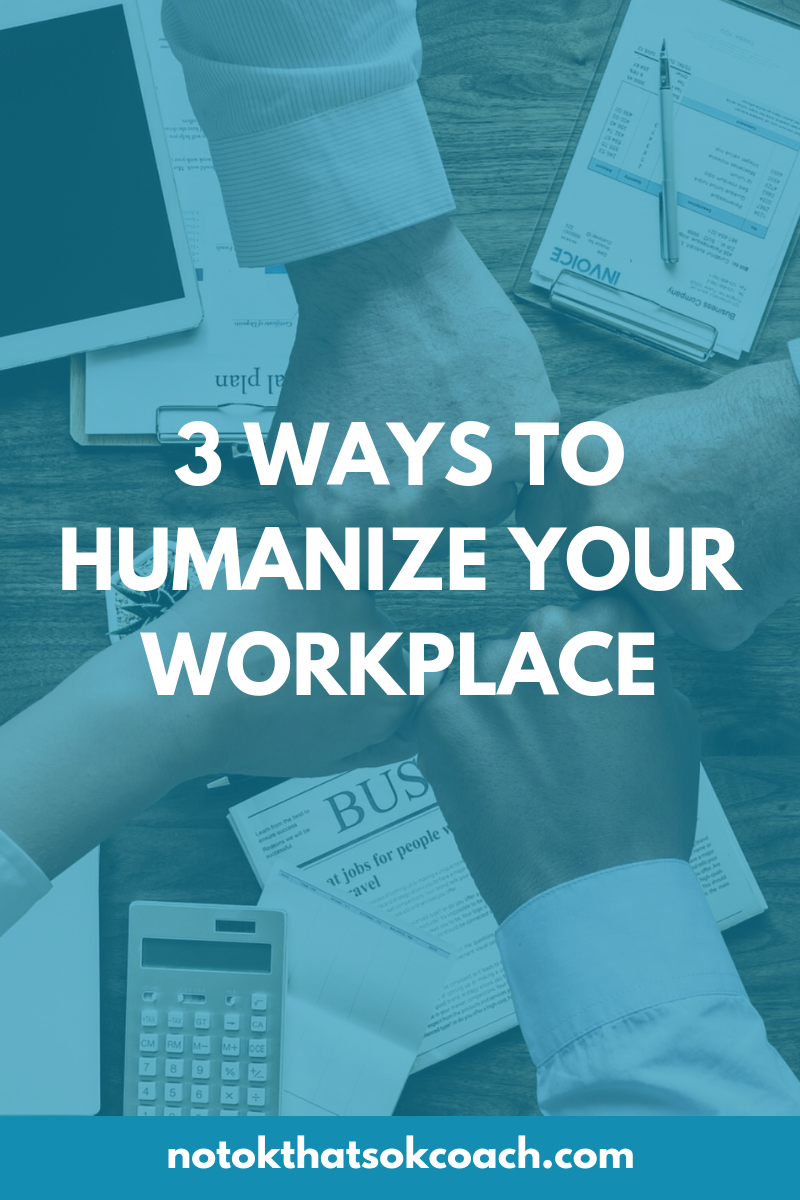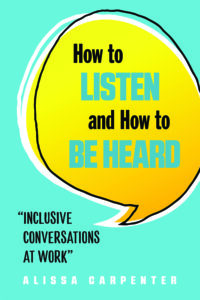Transcript from TEDx “How to Humanize Your Workplace: One Conversation at a Time”
Our workforces are more diverse than ever. We’re working across geography, generations, cultures, religions and genders… From virtual spaces and varied mindsets. And when we think about the physical look of the people that work with and for us, it’s always evolving. This means that what we see, hear, and experience today will change in a few years with a positive shift in diversity. But with that, comes challenges. Whether we realize it or not, we make assumptions about people solely based on their physical appearance. The color of someone’s skin or how tall they are, impacts the way we interact with them.
Then after we move past their physical appearance, we can make judgements on their voice and think about their accent or tone, and inflection of words. This especially comes into play as we’re no longer working with people, we see every day and our colleagues and supervisors are all over the world. If we don’t have the opportunity to have face-to-face or virtual face-to-face conversations, then we’re relying on phone calls or even emails and texts where we need to interpret the tone of their voice.
Capital letters may represent screaming to one person while the sender may have just left the caps lock on. Emojis have given us more of an opportunity to show emotions through our written words, but they’re not always appropriate or understood, especially at work. This leads to a lot of miscommunication and assumptions. Then, after we get passed all of that, we look at the content. What are they actually saying? What does it mean? And what is the impact it made?
So how do we achieve authentic understanding in the workplace with so many different people in the mix? It begins with communicating across our differences to take small—but powerful—actions to get there. But it’s one thing to talk about communicating more effectively and another to have authentic human connection through communication. But what does “communication” mean and why is it important we embrace it?
During one of my trainings, I asked the attendees to give me a one- or two-word definition and their responses ranged from information sharing to exchanging ideas. But one comment really stuck out as it hit the nail on the head, “perception and impact.” When it comes down to it, what we communicate to other people may be perceived differently and when trying to either share information or exchange ideas, being aware of the impact of our messaging is crucial.
The most well-intended message can leave a long-lasting impact, an impact that can destroy relationships, create tension, and leave people avoiding one another in the workplace.
I’ll never forget a team meeting several years ago, we were talking about diversity in the workplace and my superior nonchalantly said, “I see the map of Jerusalem all over your face.” They continued the conversation and didn’t skip a beat. I could feel my eyes bulging out to my head and my jaw practically dropped to the floor. I was stunned, shocked and embarrassed. I sat there in silence until the conversation ended and then left.
I didn’t have a one-on-one conversation to share how this statement impacted me and how it made me feel. I could and did make assumptions on what they meant but was too afraid to say something. Afraid because they were an authority figure, nervous I would hurt their feelings, feared the consequences of our conversation, and just chalked it up to not having enough time. I avoided providing input or suggestions and even feedback on my supervisor’s ideas for fear of similar statements being made. I missed an opportunity to have a conversation to let them know how this statement made me feel. By doing so, they never truly knew the impact it made or how difficult it was for them to earn my trust and respect back.
A few years later in another role, one of my coworkers returned from a leave with a cane. Our office never talked about why they had it and pretended like nothing was different. A few weeks later, that same coworker came to the office without the cane and I went up to them one-on-one and expressed how excited I was about their recovery. We had a good working relationship and relied on one another for support and I assumed they would be so excited to tell me how they were doing. Instead, they looked me straight in the face and said, “Don’t ever talk about my recovery again!” I made a quick apology and then retreated into my office, shut the door and for the first and only time, I cried in my office.
I had unintentionally crossed a line with my peer, and I felt horrible. It took me back to that incident a few years before, except now I was in the reverse position. After I pulled it together, I went to their office and asked them if they would be up for grabbing coffee to talk about what happened. They chose the location and I made it clear that I accepted responsibility for my actions. I apologized and then asked for forgiveness. While they never explained why they didn’t want to talk about their recovery, I learned it was a topic that was off limits. From there, over time we were able to repair our relationship.
While I was devasted that I offended them by my actions, I knew that if they didn’t say anything, I would have continued to make comments and tried to offer support throughout their recovery process. They could have internally been frustrated and hurt and it would have destroyed our relationship as a result. By them finding the courage to express that I offended them, I was able to make adjustments in our future interactions. We came to a common understanding through our conversation. An understanding that I wish had the courage to express a few years before.
One of the many things I learned from these experiences is the need to move beyond the phrase “treat others the way you want to be treated.” At the surface this makes perfect sense assuming that we want to be treated with respect. But it also makes the assumption that we all want to be treated the same and doesn’t take into consideration the other persons’ values, thoughts and experiences. My superior didn’t see their comments as offensive and felt comfortable expressing their thoughts in that setting. And I felt comfortable expressing my excitement for my colleague’s recovery.
But what if we tried using another phrase, “treat others the way they want to be treated.” This would give us the basis to have open and authentic conversations with the intention of getting to know how the other person wants to be treated. But how do we do this?
It starts with listening with intention.
Listen fully to what the other person is saying, not to always make a comment or suggestion back. Look them straight in the eyes, put away all devices, and just focus on the conversation. When we don’t listen with the intention to hear and understand, we’re not really part of the conversation. As I approached my colleague after our interaction to have a one-on-one conversation, they chose a neutral location. We were both able to engage in the conversation from a space where we both felt comfortable. While I wanted to apologize, I also wanted to make sure they were comfortable in having the conversation and could express their concerns.
We also needed to come to a place where we could appreciate the other person’s perspective.
Appreciating doesn’t mean agreeing and it’s not about who’s right and who’s wrong, it about truly trying to understand where they’re coming from. In my experience, I negatively impacted my colleague and even though I may have internally thought they had a strong reaction, it was important for me to hear where they were coming from so, I would not offend them in the future.
The arguably most important part of authentic communication is to take responsibility.
If we don’t speak up and have an open dialogue, the person will never know that you were offended. When I didn’t speak up the first time, my superior didn’t have the information they needed to make a change. I festered anger, hurt, and avoided making any suggestions because I didn’t want to be hurt again but that wasn’t the best response. I could have taken responsibility and ownership for initiating the difficult conversation. In the same sense, if someone else has approached us because of the impact we made, it’s important to take responsibility for our actions.
Statements like “I take full responsibility for making the statement. My intention was not to offend you and I truly apologize for doing so” go a long way. Remember, it’s not about the intent of our message, it’s about the impact it made and if someone is offended, it’s important to take responsibility. The more self-aware we are of our words and actions, the more we’re able to create workspaces where people feel valued, heard, and welcome. Authentic communication is about asking for clarification or expressing feeling, and not keeping everything in. It’s risky at first, but necessary for personal and professional growth and development — beyond the job. It’s complex, as most humans are. So, let’s make a commitment to create environments where we listen with intention, appreciate the other person’s perspective and take responsibility. After all, we can all make a difference by being human one conversation at a time.
- Cultivating Relationships - July 20, 2021
- Empowering Our People - July 13, 2021
- Finding Purpose - July 6, 2021




